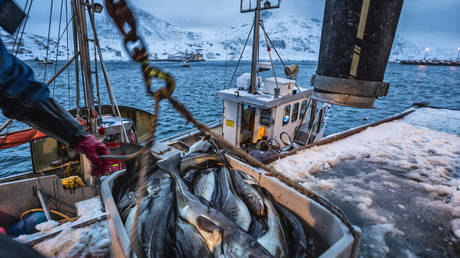Russian domestic consumption of sturgeon caviar has surged by almost 10% in the first half of 2024, according to analysis of retail sales. Stable demand for the delicacy and steady growth in production have reportedly boosted sales.
Russians purchased 9% more caviar in volume between January 1 and June 15 than they did during the same period of 2023, analytical company Checkindex.ru reported on Monday, based on anonymized purchase records from over 1.1 million online cash transactions in the country.
Consumers have shifted away from smaller volumes measuring 30-50 grams (1-1.7 ounces) to larger cans holding up to 100 grams (3.5 ounces), which was the most popular size in 2024, the report found. On average, Russians spent just over $35 per caviar purchase, which is 7% more than last year and 23% more than in 2019.
The report aligns with what Russian retailers told the business news outlet RBK, which studied the Checkindex analysis and compared it to other industry indicators. Experts said the surge in consumption can be attributed to stable prices and production growth.
Since Russia and other Caspian nations banned sturgeon fishing in the sea in 2006, the only legally available caviar on the market comes from fish farms. It’s a relatively long-cycle business, with sturgeon growing for five to seven years before eggs can be harvested and salted.
National statistics show production growth of almost 10% last year, reaching 69.4 tons of caviar. The increase over the first four months of 2024 had a record rate of 37% year-on-year, the second-highest production jump since 2021, when the industry bounced back after a drop caused by the Covid-19 pandemic, RBK reported.
Experts say the surge in demand for caviar in Russia reflects relatively small changes in prices and strong seasonality, with demand peaking around the New Year holidays. Consumers tend to be individuals with a taste for the delicacy, which has few substitutions. Their buying decisions are primarily based on the quality of the product. The increase also indicates stronger purchasing power for Russians, the outlet suggested.


